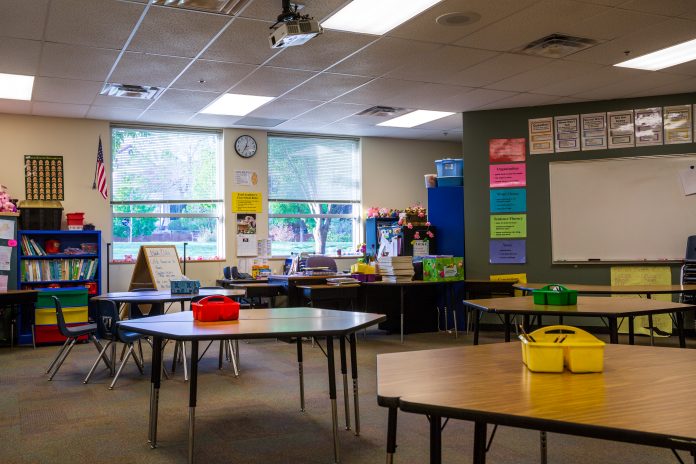Data suggests that only 7% of US schools in poorer, ethnic minority populations will open fully this Autumn – policy-makers are struggling between access to education and protection from infection
US schools in poor districts with large non-white student populations are less likely to reopen fully this academic year, according to a new study published in the peer-reviewed Journal of School Choice.
Why are ethnic minorities so disproportionately impacted? Writing about institutional racism in environmental destruction, Bianca Yaghoobi, Tanya Khemet Taiwo, and Pamela Lein said:
“Environmental exposures likely also directly influence individual susceptibility to COVID-19.
“For example, studies from multiple countries around the globe have identified a strong link between air pollution and higher rates of COVID-19-related deaths. BIPOC communities are exposed to significantly more polluted air than other communities, even when socioeconomic status is comparable.”
The data suggests race and deprivation are significant factors influencing education decisions during the pandemic. The findings are based on an analysis during August of back-to-the-classroom plans from every US state and 120 of the largest school districts. Just 13% of the most disadvantaged education areas intend to offer face-to-face lessons this fall. The picture is similar for those serving a high number of non-white students, with fewer than one in ten (7%) reopening campuses.
‘Disproportionate impact’
The figures compare with more than two-thirds overall of the largest school districts who intend to restrict options to remote learning. This is in the 2020 to 2021 academic year.
The authors say possible explanations include the disproportionate impact the virus has had on people of color. People of colour are also more likely to be frontline workers and “place less trust in the government’s response to the pandemic.”
However, the pandemic is resulting in more learning choices for the majority of children which may or may not transform the public school system, according to the study.
“The disruption caused by the pandemic represents a crossroads for public education in the United States,” says lead author David Marshall, from Auburn University.
“Parents may emerge from this moment more empowered than before and be ready to take greater responsibility over their children’s education. Or they may find themselves weary of the stress caused by the pandemic and ready for a return to what they were accustomed to prior to this disruption.”
The disruption further impacts crucial development, as found by Scientists from the University of Konstanz and Thurgau University of Teacher Education:
“Children’s competence to form social relations outside their family, especially with peers, undergoes substantial developmental changes during early childhood. These changes can be seen on the behavioural, cognitive, emotional, and social level.
“Our research confirms that higher social pretend play competence is associated with better social-emotional skills.”
Reopening guidance from policy-makers also found that:
- Nearly all states have strongly recommended mask-wearing or made this mandatory, some for children as young as two.
- However, students are allowed mask ‘breaks’ when social distancing such as outdoors or in ventilated rooms.
- Policies vary widely over school sports, with some states postponing football until the spring and switching to lower risk activities. The 19 states proceeding with high school American football seasons are more likely to have backed Donald Trump in the 2016 elections. This is compared with those that have cancelled because of COVID-19.
- Among the 18 states with case rates under 10/10,000 (as of 21st August), almost half of them were not playing American football.
- Students most at risk from COVID-19 are being offered alternative ways of learning by almost every state. This even applies in districts where children are being sent back to classrooms. Several states are also providing vulnerable staff with options such as remote learning.
- Policies on teaching methods vary, with some states switching to remote learning if transmission rates spike. Others say that in-person learning remains the goal and digital alternatives are no replacement.
The academic team are now calling for further research in several areas, including how students fare academically under the various modalities employed, and whether these academic outcomes – or mental, physical, and social health outcomes – vary according to racial and demographic characteristics.
Limitations, the authors state, of this current research include that the reopening of America’s schools in the fall of 2020 is a “very fluid event”.
“It is highly possible that districts that made one decision as of August 21, 2020 will choose differently before the school year begins, or that individual states’ plans will have shifted since our review,” they add.











